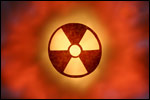
Today marks the 20th anniversary of the Chernobyl disaster. As many a retrospective reminds us, that nuclear meltdown initially claimed 31 lives — but has affected thousands more over the years (the actual number, of course, is a matter of some dispute).
Inspired by a note from university professor William Underwood, I decided to check out a few other 20th-century environmental disasters whose anniversaries fall this year, from mass mercury poisoning in Japan to a mining landslide in Wales.
If nothing else, these stories — below the fold — are a reminder that industrial pollution and injustice are nothing new. Oh, and that this kind of thing happens all around the world. Sigh.
As one scientist analyzing a dioxin spill in Italy put it, “I think this accident teaches us that it is better to take care of the environment before these things happen. Not after.”
1956: Minamata, Japan. On May 1, four days after American audiences began shrieking with terror at the first Godzilla movie, doctors in this coastal farming and fishing village faced a different terror: a mysterious epidemic causing brain damage and birth defects. “Minamata Disease” turned out to be mercury poisoning, courtesy of nearby chemical company Chisso — and thanks to the local predilection for fish. Now noted by some as the first revelation of the dangers of bioaccumulation, the poisoning is said to have sickened more than 10,000 people. The Japanese government reached a settlement with most of the victims in 1996 (yes, 40 years later); some continue to go forward with court cases and attempts to be officially recognized. As for Chisso, it was allowed to continue dumping until 1968, and still operates in Minamata today.
1966: Aberfan, Wales. In this closeknit mining community, two days of late-October rain caused more than half a million tons of coal waste to careen down a mountainside toward town. The slurry moved “at a hell of a speed, in waves,” said one worker. The landslide destroyed 20 homes and a school in a few minutes’ time; when it was over, a resident remembered later, “you couldn’t hear a bird or a child.” Parents and miners rushed to dig for survivors, but the slide had killed 144 people, including 116 children. Though the tragedy eventually led to mining-industry reform in the country, the National Coal Board did not immediately accept responsibility for what had happened. Left to its own devices, the town used part of a survivors’ fund to remove piles of waste around the village, and was not reimbursed until 1997. The site of the school is now a garden.
1976: Seveso, Italy. If an explosion occurs at a chemical plant on a Saturday, and no one is there to hear it, does anyone get evacuated? Not for three weeks, in this case. On July 10, a pesticide facility not far from Milan released a toxic cloud containing, among other things, dioxin. The release contaminated 10 square miles — including Seveso, a town of 17,000 — causing rashes and poisoning in residents, killing animals, and leading to the slaughter of 70,000-80,000 farm animals to prevent the spread of contamination. As doctors and others kept a wary eye on the situation, fearing that sickness wouldn’t surface until years later, the plant supervisor was sentenced to five years in prison. The town gave its name to Europe’s “Seveso Directive,” an industrial accident-prevention program adapted in 1982 and still in place. The hardest-hit area, known as Zone A, was fenced off for years. Today it’s a popular local park.
1996: Marinduque Island, Philippines. It wasn’t a secret that Marcopper, a mining company, had dumped waste in this island’s waterways since starting up in the late 1960s. But it took 3 million tons of tailings bursting from a storage pit for the government to declare a “state of calamity” and shut the company down. (One reason for the blind eye: former president Ferdinand Marcos was a partner in the company; his shares went to subsequent presidents after his 1986 ouster.) The March 24 release flooded villages, contaminated drinking water, and forced hundreds to evacuate. Farmers, fishers, and others lost their livelihoods, and locals still attribute rashes and respiratory diseases to contact with the water. Though the company agreed to compensate people and rehabilitate the land, the local rivers contained tailings as of a report in 2003. Remediation efforts have reportedly included hiring locals to fill sandbags with the tailings and return them to the pit.


